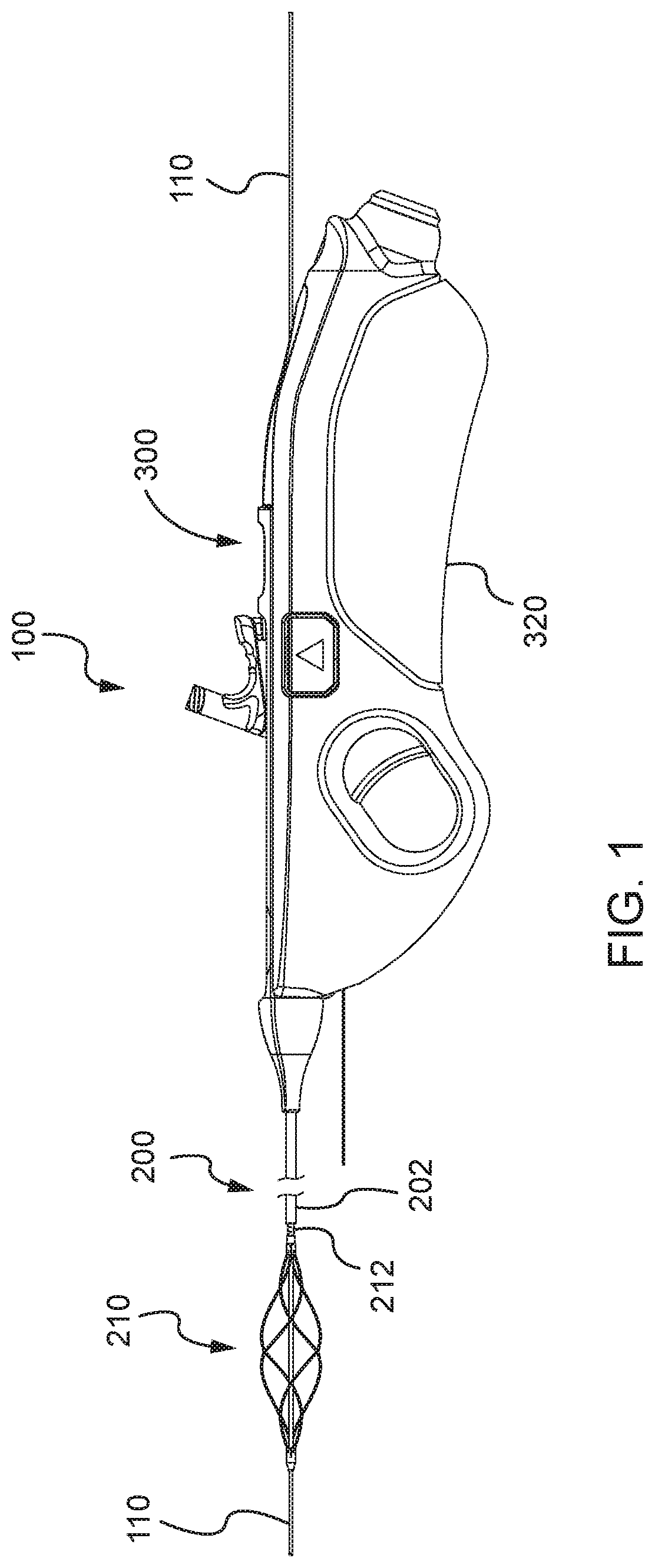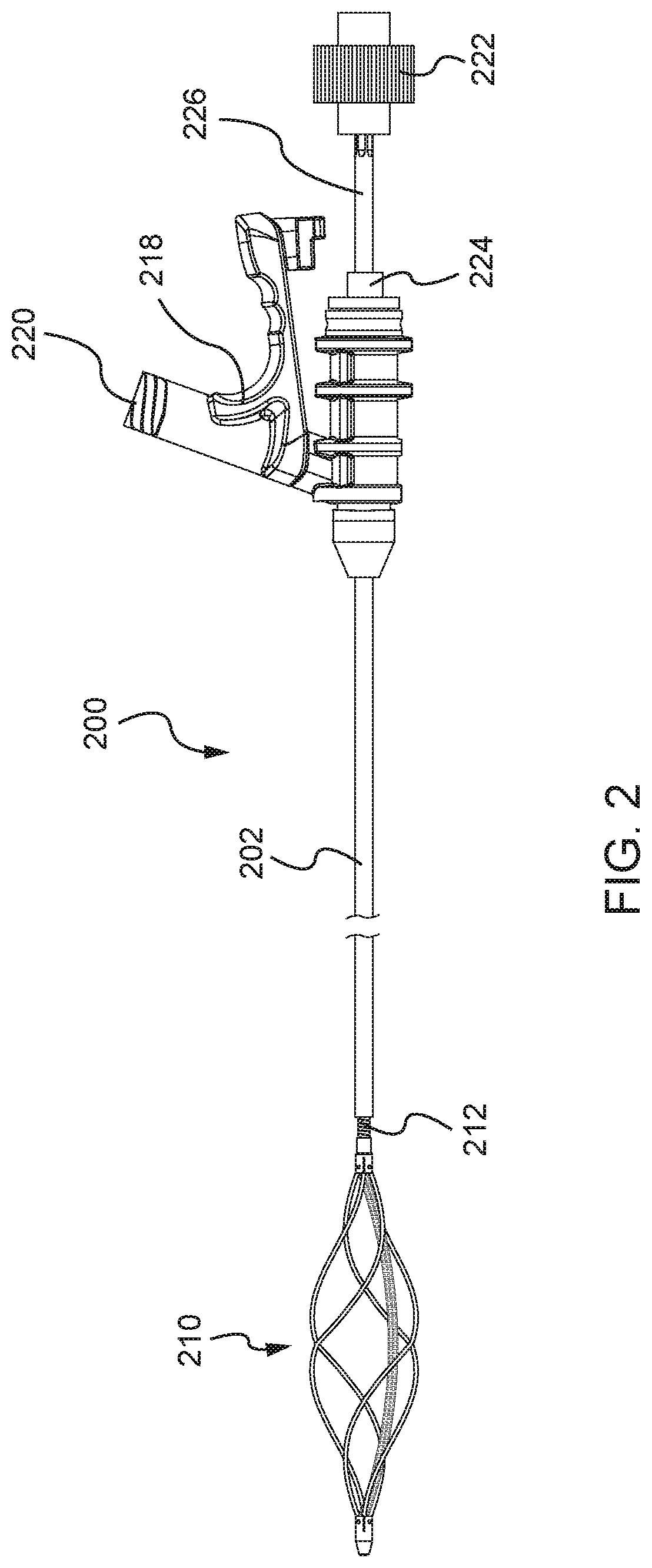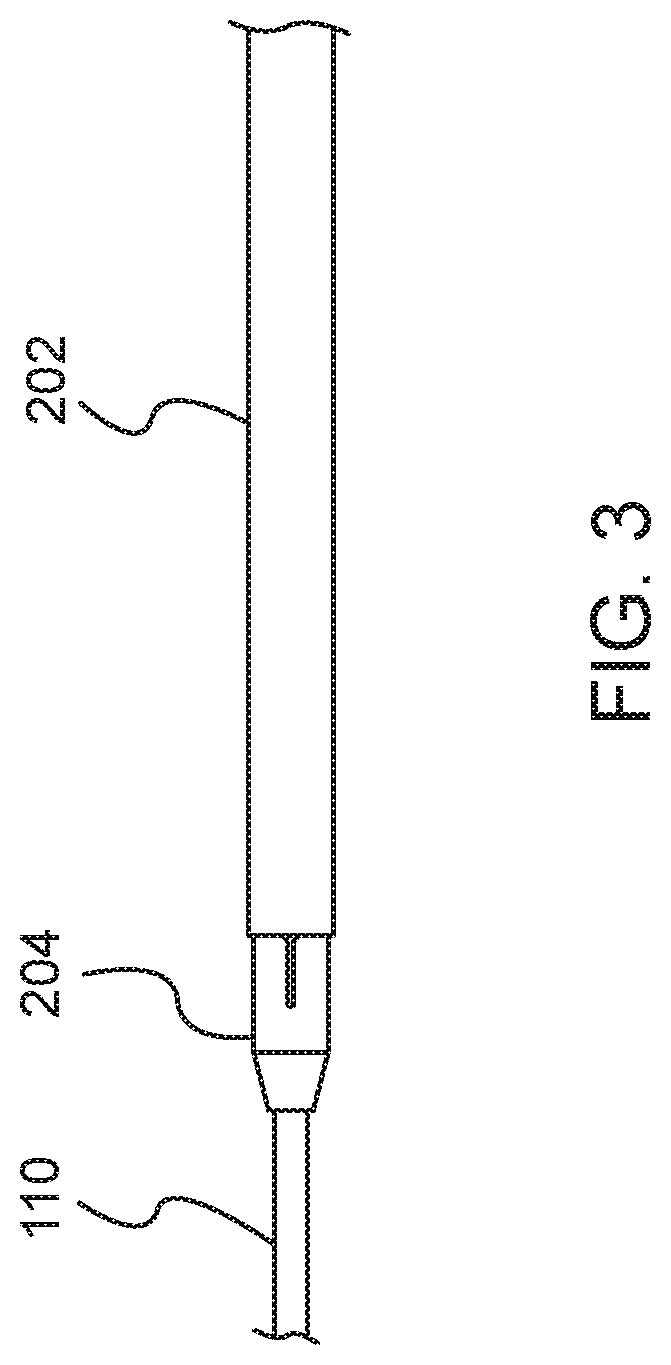Rotational mechanical thrombectomy device
a mechanical thrombosis and rotating technology, applied in the field of mechanical thrombosis devices, can solve the problems of reducing affecting the quality of life of many individuals, and vte is a significant risk, so as to facilitate the operation
- Summary
- Abstract
- Description
- Claims
- Application Information
AI Technical Summary
Benefits of technology
Problems solved by technology
Method used
Image
Examples
Embodiment Construction
[0038]Systems and methods disclosed herein provide a mechanical thrombectomy device designed to treat deep vein thrombosis. The mechanical thrombectomy device may be designed to effectively work in large veins without using lytics. The device may be a single-use, handheld device that is capable of removing wall adherent and intraluminal clots via rotary maceration. The device is designed to work over a standard size guidewire and, specifically, includes a flexible metallic center lumen that is capable of sliding over a guidewire. The device also includes wall contact features, including a macerating basket that is designed to directly contact and macerate material forming a blood clot. This wall contact design allows the device to be used without lytics or with a reduced amount of lytics. The device may also include user-friendly features, including a cartridge design that facilitates easy connection and separation of a catheter from a handle assembly, as well as two actuator option...
PUM
 Login to View More
Login to View More Abstract
Description
Claims
Application Information
 Login to View More
Login to View More - R&D
- Intellectual Property
- Life Sciences
- Materials
- Tech Scout
- Unparalleled Data Quality
- Higher Quality Content
- 60% Fewer Hallucinations
Browse by: Latest US Patents, China's latest patents, Technical Efficacy Thesaurus, Application Domain, Technology Topic, Popular Technical Reports.
© 2025 PatSnap. All rights reserved.Legal|Privacy policy|Modern Slavery Act Transparency Statement|Sitemap|About US| Contact US: help@patsnap.com



